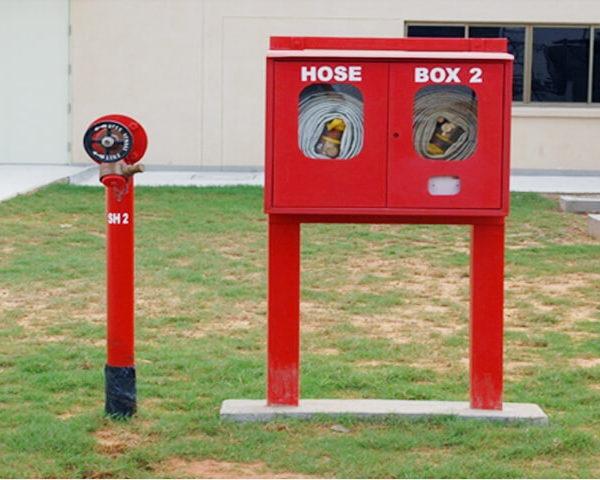Fire Protection Systems
One stop solution for your all need to get protected from fire.
Our services related to Fire System

Fire Safety Audits

Turnkey Installation of Fire Systems

Maintenance of Fire Systems

Training for Fire Systems
Different type of Fire Systems

Fire Hydrant System
Fire
hydrant system
is a safety measure or emergency equipment required in buildings that comprises a series of components that when assembled together provide a source of water to assist fire.

Sprinkler System
A
fire sprinkler system
is an
active fire protection
method, consisting of a water supply system, providing adequate pressure and flowrate to a water distribution piping system, onto which
fire sprinklers
are connected. Although historically only used in factories and large commercial buildings, systems for homes and small buildings are now available at a cost-effective price.
Fire sprinkler systems are extensively used worldwide, with over 40 million sprinkler heads fitted each year. In buildings completely protected by fire sprinkler systems, over 96% of fires were controlled by fire sprinklers alone.

Medium Velocity Water Spray System
An MVWS
system
(short for a
Medium Velocity Water Spray System
) is a
water
-based fire protection
system
. MVWS
systems
are used to provide cooling and/or control the burning in many large scale industrial applications, such as in thermal power plants, tank farms, et al.

High Velocity Water Spray System
A
High Velocity Water Spray System
is useful in oil based
system
and is installed to suppress fires involving liquids above 65C or
high
flash points. It works on three basic principles of fire extinguishing which are emulsification, cooling and smothering which results in rapid suppression of fire within seconds.

High Pressure Water Mist System
A
water mist system
is a fire protection
system
which uses very fine
water
sprays (i.e.
water mist
). The small
water
droplets allow the
water mist
to control, suppress or extinguish fires by: cooling both the flame and surrounding gases by evaporation.

Foam System
Foam
suppression
systems
extinguish fire by separating the fuel from the oxygen. ... To
do
this, the extinguishing agent (the
foam
) smothers or blankets the surface of the fuel. The water content of the
foam
then cools the fuel and the area of
foam
covering the fuel to prevent reignition via flammable vapors.

CO2 Flooding System
A fixed installation designed to displace the oxygen in the protected space and thus extinguish the fire, usually used to fight fires in engine rooms, boiler rooms, pump rooms and holds. The
system
normally consists of a series of large
CO2
cylinders.

Clean Agent System
A
clean agent
is any type of fire extinguishing
agent
that is electrically non-conductive, volatile, or gaseous, and that does not leave a residue upon evaporation.
Clean agent
fire suppression
systems
make use of an inert gas or chemical that is stored in a container and discharged when a fire is detected.

Fire Alarm or Detection System
A fire alarm system warns people when smoke, fire, carbon monoxide or other fire-related emergencies are detected. These alarms may be activated automatically from smoke detectors, and heat detectors or may also be activated via manual fire alarm activation devices such as manual call points or pull stations.
Fire detectors
sense one or more of the products or phenomena resulting from
fire
, such as smoke, heat, infrared and/or ultraviolet light radiation, or gas. In dwellings, smoke
detectors
are often stand-alone devices.
Discover More

Linear Heat Sensing System
Linear Heat Detection
(
LHD
) is a continuous
heat detector
designed to
detect heat
along the length of a sensor cable. This sensor cable is made up of two conductors, both insulated by
heat
sensitive polymers. ... When the ambient temperature meets or exceeds the
detector's
fixed temperature, the polymer melts.











